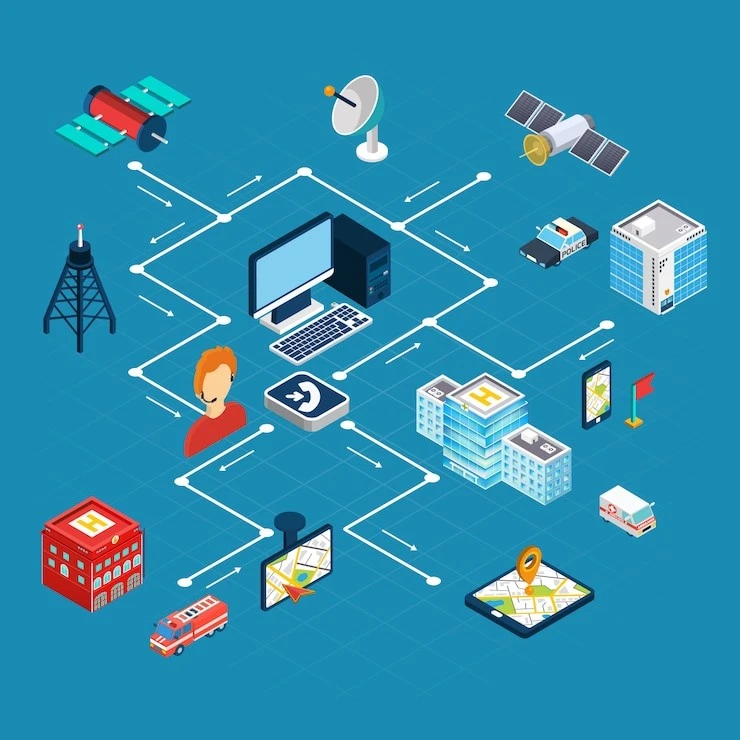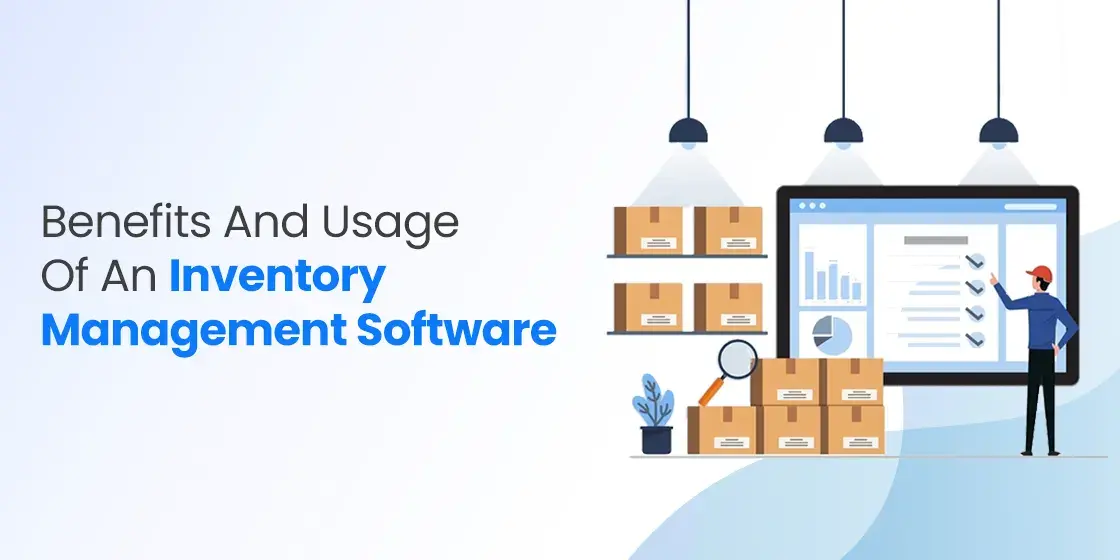Table of Content
Discover What Factors are Important in Telecommunications Software Development
The telecommunications industry stands at the forefront of digital transformation, fundamentally reshaping how we connect, communicate, and conduct business across the globe. With the global telecom services market projected to reach $2,874.76 billion by 2030 at a CAGR of 6.2%, telecommunications software development has emerged as the driving force behind this unprecedented growth.
As we witness the rapid expansion of 5G networks, artificial intelligence integration, and Internet of Things (IoT) deployments, the complexity of telecom infrastructure has reached new heights. Modern telecommunications companies require robust, scalable, and intelligent software systems that can adapt to evolving market demands while maintaining seamless connectivity for billions of users worldwide.
Today’s telecom industry presents both exciting opportunities and significant challenges for software developers and business leaders alike. Telecom software development encompasses a broad spectrum of technical disciplines. And that requires the specialized expertise and forward-thinking approaches of custom software development services to remain competitive in this dynamic industry. Let’s begin.
Telecommunications Software Development – A Comprehensive Overview

Telecommunications software development represents a specialized field within the broader software engineering discipline, focusing specifically on creating applications, systems, and platforms that enable, manage, and optimize communication networks. This domain goes far beyond simple communication applications—it’s the backbone that powers our connected world.
Core Components and Scope
The scope of telecommunications software development includes:
- Network Management Systems – Software that monitors, controls, and optimizes network performance
- Operational Support Systems (OSS) – Tools for network inventory, fault management, and service provisioning
- Business Support Systems (BSS) – Applications for billing, customer management, and revenue assurance
- Advanced Analytics Platforms – Solutions for real-time data processing and predictive insights
- Security Management Tools – Systems for threat detection, encryption, and compliance monitoring
Partner with our software development specialists to pioneer custom solutions that drive your business forward.
Request Your Solution
Modern Architecture Evolution
The evolution from traditional circuit-switched networks to packet-based, software-defined architectures has fundamentally transformed telecommunications software development practices. Today’s solutions must support:
- Network Function Virtualization (NFV) – Abstracting network services from hardware
- Software-Defined Networking (SDN) – Centralized network control and programmability
- Cloud-Native Architectures – Scalable, distributed system design
- Dynamic Resource Allocation – Automated network optimization and management
Key Stakeholders and Collaboration
Modern telecommunications software development involves multiple stakeholders working together:
- Network Equipment Manufacturers – Hardware vendors requiring software integration
- Telecom Service Providers – Operators needing comprehensive management solutions
- Enterprise Customers – Businesses requiring specialized communication tools
- Technology Vendors – Software companies providing specialized solutions
Understanding these fundamental aspects is crucial for any organization considering telecom software development initiatives.
Modern Trends in Telecommunications Software Development Industry

Let’s take a look at some of the top trends in telecom software development industry today.
Artificial Intelligence and Machine Learning Integration
AI and ML have emerged as transformative forces in telecommunications software development, revolutionizing how networks operate and serve customers.
Key applications of AI in telecom industry include:
- Predictive Maintenance – Anticipating hardware failures before they occur
- Automated Network Optimization – Real-time traffic routing and resource allocation
- Intelligent Customer Service – AI-powered chatbots and virtual assistants
- Fraud Detection – Advanced algorithms preventing unauthorized network access
- Network Security – AI-driven threat detection and response systems
5G Network Expansion and Development
The global rollout of 5G networks is fundamentally changing telecommunications software development approaches, enabling new capabilities and use cases.
Popular 5G-enabled features include:
- Ultra-Fast Data Processing – Supporting streaming and cloud gaming applications
- Low Latency Communications – Enabling real-time applications and IoT devices
- Enhanced Mobile Broadband – Supporting bandwidth-intensive applications
- Massive IoT Connectivity – Connecting millions of devices simultaneously
- Mission-Critical Communications – Supporting autonomous vehicles and smart cities
Software developers must now create solutions that leverage 5G’s enhanced capabilities while ensuring backward compatibility with existing 4G and legacy network infrastructure.
Cloud-Native Architectures and Virtualization
Cloud computing has revolutionized telecommunications software by enabling scalable, cost-effective network solutions that adapt quickly to changing demands.
Key benefits include:
- Faster Service Deployment – Rapid rollouts of new features and capabilities
- Lower Infrastructure Costs – Reduced hardware dependency and maintenance
- Seamless Collaboration – Real-time data exchange across telecom providers
- Enhanced Scalability – Dynamic resource allocation based on demand
- Improved Flexibility – Support for microservices and containerized applications
For telecom companies, embracing containerization, microservices, and virtualization introduces greater flexibility, scalability, and adoption of the latest automation trends and capabilities.
Software-Defined Networking (SDN) and Network Function Virtualization (NFV)
These technologies represent crucial trends enabling greater network agility and operational efficiency.
SDN capabilities consist of:
- Dynamic Network Configuration – Real-time network adjustments
- Centralized Control – Unified management of distributed resources
- Enhanced Network Agility – Rapid deployment of new services
- Efficient Resource Utilization – Optimized bandwidth and processing allocation
The advantages of NFV include:
- Hardware Independence – Network functions as software modules
- Flexible Service Deployment – Rapid service creation and modification
- Cost Reduction – Elimination of proprietary hardware requirements
- Simplified Management – Centralized control of network functions
Internet of Things (IoT) and Edge Computing
IoT integration is driving new requirements for telecommunications software development, with massive device proliferation expected in 2025.
Popular development areas for IoT today are:
- Real-Time Data Processing – Handling massive volumes of sensor data
- Edge Computing Integration – Processing data closer to devices
- Device Management – Monitoring and controlling millions of connected devices
- Security Implementation – Protecting diverse device ecosystems
- Protocol Support – Enabling communication across various device types
Cybersecurity and Threat Protection
Modern telecommunications software development must incorporate advanced cybersecurity measures to protect against evolving threats.
Common security requirements include:
- Blockchain-Based Authentication – Secure device and user verification
- AI-Driven Threat Detection – Proactive security monitoring
- End-to-End Encryption – Data protection across all communications
- DDoS Protection – Network availability and performance assurance
- Compliance Management – Meeting regulatory and industry standards
Benefits of Custom Telecom Software Development

Now that we have taken a look at the core trends in modern telecommunications software development, you might be asking – what benefits would it offer you? Let’s take a look at some of the top avenues of change and their perceived benefits from custom telecom software development.
Competitive Advantages and Business Value
Custom telecommunications software development offers significant advantages over off-the-shelf solutions, providing organizations with tailored functionality that directly addresses their unique requirements. Its primary benefits include:
- Personalized Functionality – Features designed specifically for your business processes
- Competitive Differentiation – Unique capabilities that set you apart from competitors
- Complete Control – Full ownership of code, features, and development roadmap
- Integration Flexibility – Seamless connection with existing systems and workflows
Cost-Effectiveness and Long-Term Value
Despite higher initial investment requirements, custom solutions provide significant long-term financial benefits. The financial advantages include:
- No Licensing Fees – Eliminate ongoing third-party software costs
- Feature Optimization – Pay only for functionality you actually need
- Reduced Vendor Dependency – Avoid lock-in contracts and price increases
- Scalable Investment – Add new features without additional licensing costs
Developing custom telecom software acts as a cost-effective solution for your business as it allows you to integrate new features into the existing software without any additional costs.
Enhanced Customer Experience and Market Position
Custom solutions enable organizations to create superior customer experiences and improve market positioning. Customer experience benefits include:
- Personalized Service Offerings – Tailored solutions for specific customer segments
- Improved User Interfaces – Custom-designed experiences for your brand
- Faster Response Times – Optimized performance for your specific use cases
- Higher Conversion Rates – Features designed to improve customer acquisition
- Enhanced Customer Relations – Better support tools and communication channels
Scalability and Future-Proofing
Custom telecommunications software provides superior scalability and adaptability compared to generic alternatives. Popular scalability features include:
- Flexible Architecture – Designed to grow with your business needs
- Technology Evolution – Easy integration of emerging technologies
- Performance Optimization – Scalable to handle increasing data volumes
- Geographic Expansion – Support for multi-region deployments
Owning your telecom software means that you dictate upgrade cycles, roadmap priorities, and integration standards, having complete control over technology evolution, future-proofing its success.
Security and Compliance Excellence
Custom development enables superior security implementation and regulatory compliance. Its security benefits include:
- Industry-Specific Protocols – Security measures tailored to telecom requirements
- Regulatory Compliance – Built-in compliance with jurisdiction-specific requirements
- Data Protection – Advanced encryption and access control measures
- Audit Capabilities – Comprehensive logging and monitoring features
During custom development, you can encode jurisdiction-specific retention windows, lawful intercept hooks, and audit-trail schemas from day one.
Integration and Operational Efficiency
Custom solutions provide superior integration capabilities and operational benefits for better software quality management. The top integration benefits in custom development include:
- Legacy System Support – Seamless connection with existing infrastructure
- Third-Party Compatibility – Easy integration with external systems
- Data Consistency – Unified data management across all systems
- Workflow Optimization – Elimination of manual processes and data silos
Key Success Factors for Telecommunications Software Development

Organizations that succeed in telecommunications software development share several common characteristics:
- Strategic Vision – Clear alignment between technology investments and business objectives
- Technical Excellence – Deep expertise in telecommunications protocols, architectures, and emerging technologies
- Security Focus – Comprehensive protection of sensitive data and critical infrastructure
- Compliance Commitment – Adherence to industry regulations and standards
- Customer-Centric Approach – Solutions designed to enhance user experience and service quality
Future Opportunities, Challenges, and Recommendations for Telecom Software Development

The telecommunications landscape continues to evolve rapidly, presenting both opportunities and challenges:
Emerging Opportunities in Telecom Software Development
- 6G Network Development – Next-generation wireless technologies
- Quantum Communications – Ultra-secure communication channels
- Advanced AI Integration – Intelligent, self-optimizing networks
- Edge Computing Expansion – Distributed processing capabilities
- IoT Ecosystem Growth – Massive device connectivity and management
Key Challenges in Opting for Telecommunications Software Development
- Cybersecurity Threats – Increasingly sophisticated attack vectors
- Regulatory Complexity – Evolving compliance requirements across jurisdictions
- Technology Integration – Seamless connection of legacy and modern systems
- Skills Shortage – Demand for specialized telecommunications software expertise
Strategic Recommendations for the Future
For organizations considering telecommunications software development initiatives:
- Invest in Core Competencies – Develop internal expertise in key technology areas
- Plan for Long-Term Evolution – Design flexible architectures that can adapt to change
- Prioritize Security – Implement comprehensive security frameworks from the start
- Embrace Emerging Technologies – Stay current with AI, 5G, and cloud innovations
- Focus on Customer Value – Ensure all technical decisions ultimately benefit end users
FAQs
| What are the main types of telecommunications software development services? The key types include: Operations Support Systems (OSS) for network management, Business Support Systems (BSS) for billing and customer management, AI-powered solutions for automation, Custom VoIP platforms, IoT integration software, Cybersecurity solutions. These services cover everything from network monitoring and fault detection to customer relationship management and revenue assurance. |
| How much does custom telecommunications software development typically cost? Costs vary significantly based on complexity and scope. Small projects with basic features range from $20,000-$50,000, medium-sized solutions cost $120,000-$220,000, while complex enterprise-grade systems can exceed $500,000. Factors affecting cost include human resources, technology stack, scalability requirements, security features, and compliance needs. |
| What are the key technologies used in modern telecom software development? Essential technologies include: Cloud-native platforms (Docker, Kubernetes), AI/ML frameworks (TensorFlow, PyTorch), Database systems (mongoDB, PostgreSQL), SDN/NFV technologies (openstack, opendaylight), API management tools, Advanced security frameworks. These technologies enable scalable, intelligent, and secure telecommunications solutions. |
| How long does it take to develop custom telecommunications software? Development timelines vary based on project complexity. Simple applications may take 2-6 months, medium complexity projects require 6-12 months, while comprehensive enterprise solutions can take 12-24 months or more. Factors affecting timeline include feature scope, integration requirements, regulatory compliance needs, and team size. |
Conclusion
Telecommunications software development has evolved into a mission-critical discipline that drives innovation, operational efficiency, and competitive differentiation across the global communications industry. The strategic importance of this field cannot be overstated—it serves as the technological backbone enabling digital economies to flourish and societies to remain interconnected in our increasingly connected world.
The future belongs to organizations that view telecommunications software development as a core competency rather than a support function, investing in the technical expertise, architectural frameworks, and innovation capabilities needed to thrive in our interconnected world.

Empower your digital journey with StruqtIO - Your dedicated partner for cutting-edge custom software development, innovation, and digital transformative solutions. Harness the power of technology to elevate your business and redefine your digital landscape today.


